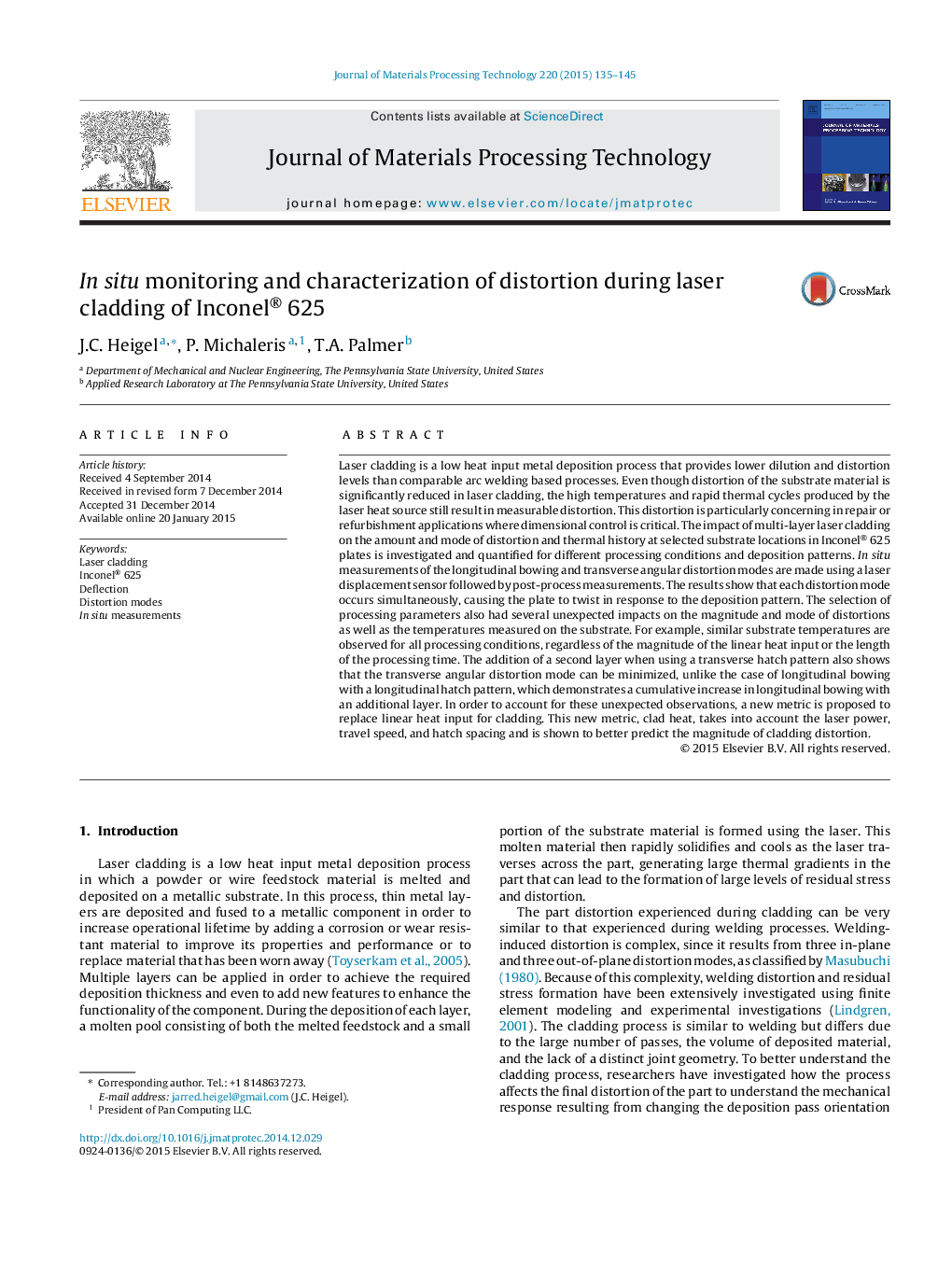| کد مقاله | کد نشریه | سال انتشار | مقاله انگلیسی | نسخه تمام متن |
|---|---|---|---|---|
| 792966 | 1466747 | 2015 | 11 صفحه PDF | دانلود رایگان |

Laser cladding is a low heat input metal deposition process that provides lower dilution and distortion levels than comparable arc welding based processes. Even though distortion of the substrate material is significantly reduced in laser cladding, the high temperatures and rapid thermal cycles produced by the laser heat source still result in measurable distortion. This distortion is particularly concerning in repair or refurbishment applications where dimensional control is critical. The impact of multi-layer laser cladding on the amount and mode of distortion and thermal history at selected substrate locations in Inconel® 625 plates is investigated and quantified for different processing conditions and deposition patterns. In situ measurements of the longitudinal bowing and transverse angular distortion modes are made using a laser displacement sensor followed by post-process measurements. The results show that each distortion mode occurs simultaneously, causing the plate to twist in response to the deposition pattern. The selection of processing parameters also had several unexpected impacts on the magnitude and mode of distortions as well as the temperatures measured on the substrate. For example, similar substrate temperatures are observed for all processing conditions, regardless of the magnitude of the linear heat input or the length of the processing time. The addition of a second layer when using a transverse hatch pattern also shows that the transverse angular distortion mode can be minimized, unlike the case of longitudinal bowing with a longitudinal hatch pattern, which demonstrates a cumulative increase in longitudinal bowing with an additional layer. In order to account for these unexpected observations, a new metric is proposed to replace linear heat input for cladding. This new metric, clad heat, takes into account the laser power, travel speed, and hatch spacing and is shown to better predict the magnitude of cladding distortion.
Journal: Journal of Materials Processing Technology - Volume 220, June 2015, Pages 135–145